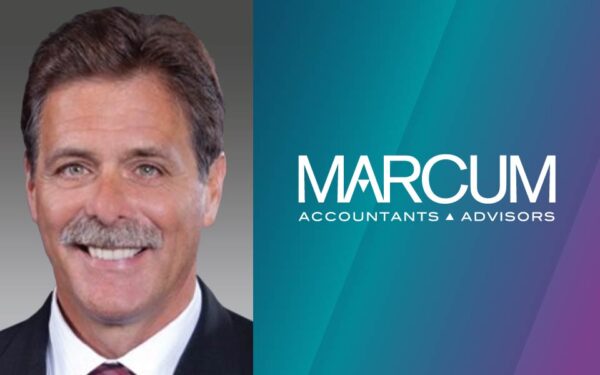Continuing Financial Relief for Food & Beverage Companies
By Michael Coones, Senior Accountant, Tax & Business Services
Many of the federal government’s COVID-19 relief programs have come to an end or are no longer accepting new applications. However, there are still several programs still available to food and beverage businesses, which could provide some relief.
Employee Retention Tax Credit (ERTC)
The Coronavirus Aid, Relief, and Economic Security (CARES) Act created the ERTC to help small and mid-size businesses retain employees on payroll during the COVID-19 pandemic. Under the ERTC, these businesses were eligible to receive a credit of up to 50% of qualifying wages paid from March 13 to December 31, 2020. The Infrastructure and Jobs Act, passed in January 2021, revised the deadline to include wages paid through September 30, 2021, or December 31, 2021 for recovery startup businesses. The maximum amount of eligible wages per employee was $10,000 for 2020 and $10,000 per quarter for 2021.
As modified by the Infrastructure and Jobs Act, employers that received a loan under the Paycheck Protection Program (PPP) are still eligible for the ERTC.
ERTC eligibility is based on 2019 gross receipts. Businesses must have had 500 or fewer employees in 2019, and must have experienced the following during 2020 and/or 2021:
- Full or partial suspension of the operation of their trade or business during any calendar quarter because of governmental orders limiting commerce, travel, or group meetings due to COVID-19, or
- A significant decline in gross receipts.<?li>
According to the IRS, a “significant decline in gross receipts” begins on the first day of the first calendar quarter of 2020 for which an employer’s gross receipts are less than 50% (80% for 2021) of its gross receipts for the same quarter in 2019. The decline ends on the first day of the first quarter following the quarter in which gross receipts are more than 80% of what they were in the same calendar quarter in 2019.
For 2020, businesses with 100 or fewer full-time employees may qualify for 100% employee wage credit. Businesses with more than 100 employees qualify for the 100% employee wage credit if they pay employee wages when the company is not providing services, due to COVID-19. The threshold increased to 500 employees for 2021.
Various factors go into calculating the ERTC. Qualifying wages, which generally include wages and healthcare costs, must be paid between March 13, 2020 and September 30, 2021. The credit is only applicable to wages not used in the forgiveness calculation for a PPP loan. For 2020 the maximum qualified wages were $10,000 for the year, the credit was 50% of the qualified wages for a maximum credit of $5,000 per eligible employee for the year. In 2021 qualified wages were increased to $10,000 per quarter, the credit increased to 70% of qualified wages for a maximum credit of $7,000 per quarter.
Despite the expiration date of September 30, 2021, eligible businesses can still take advantage of the ERTC. If the business did not previously file for the credit, it may file for a retroactive ERTC refund. The business must submit an Adjusted Employer’s Quarterly Federal Tax Return or Claim for Refund on Form 941-X. Eligible businesses have up to three years from the date of their original 941 filing to file Form 941-X and claim a refund.
Restaurant Revitalization Fund (RRF)
The Restaurant Revitalization Fund (RRF), created by the American Rescue Act, was intended to assist restaurants and other eligible businesses such as bars, taprooms, and caterers. The purpose of the program was to provide up to $5 million per location (up to $10 million) to businesses and affiliates to cover their pandemic-related revenue loss.
Applications are now closed; however, businesses that already received funds still have an opportunity to avoid repaying the money if funds are used for eligible expenses no later than March 11, 2023. The following are allowable uses of funds:
- Payroll costs including sick pay;
- Mortgage payments;
- Rent payments (not including prepayments);
- Debt service, principal, and interest (not including prepayments);
- Utility payments;
- Maintenance expenses;
- Construction of outdoor seating;
- Supplies including protective equipment and cleaning products;
- Food and beverage expenses;
- Covered supplier costs; and
- Operating expenses.
Recipients that did not fully expend funds prior to December 31, 2021 are required to submit annual reports showing how much was spent on each category until the funds are fully depleted. Any funds not used must be returned to the government.
Paycheck Protection Program (PPP)
The PPP was enacted as part of the CARES Act to incentivize businesses to continue paying employees and avoid layoffs. The loans can be used to help pay for the following costs:
- Payroll costs, including benefits;
- Mortgage interest;
- Rent;
- Utilities;
- Worker protection costs related to COVID-19;
- Uninsured property damage caused by looting or vandalism; and
- Certain supplier costs and operating expenses.
The U.S. Small Business Administration (SBA) will forgive PPP loans if employee retention criteria are met and the funds are used for eligible expenses listed above. The deadline for applying for PPP loans was May 31, 2021. However, if a business received a PPP loan from the first, second, or both draws, it may still be able to apply for PPP loan forgiveness.
Loans issued prior to June 5, 2020 had a maturity date of two years; loans issued after June 5, 2020 have a maturity date of five years. If a borrower has not yet applied for loan forgiveness, payments are deferred for 10 months after the end of the loan forgiveness period. This covered period ranges from 8 to 24 weeks. Once the covered period ends and all loan proceeds for which the borrower is requesting forgiveness have been used, the borrower can apply for loan forgiveness. Once a borrower reaches the end of the 10-month period following the covered period, they are required to start repaying the loan. However, even if a business has started making payments on the loan, it is still eligible to apply for loan forgiveness until the maturity date.
To qualify for full forgiveness, during the covered period the borrower must have:
- Maintained employee compensation levels;
- Spent loan proceeds on payroll costs and other eligible expenses (see list of eligible expenses above); and
- Spent at least 60% of the proceeds on payroll costs.
Applying for PPP loan forgiveness can be done in two ways:
- If the borrower’s lender is participating in direct forgiveness, the borrower must use the SBA forgiveness portal. This is typically only the case for loans of $150,000 or less. Borrowers making their first PPP loan draw do not need to detail or provide any documentation on how the funds were spent. For the second PPP loan draw, borrowers need to show that there was at least a 25% reduction in gross receipts between comparable quarters in 2019 and 2020.
- If the borrower’s lender is not participating in direct forgiveness, the borrower must apply through their lender. This is typically the case if the PPP loan was greater than $150,000. The borrower must file SBA Form 3508, SBA Form 3508EZ, SBA Form 3508S, or a lender equivalent. In this case, the borrower is required to provide documentation showing how the funds were used.









